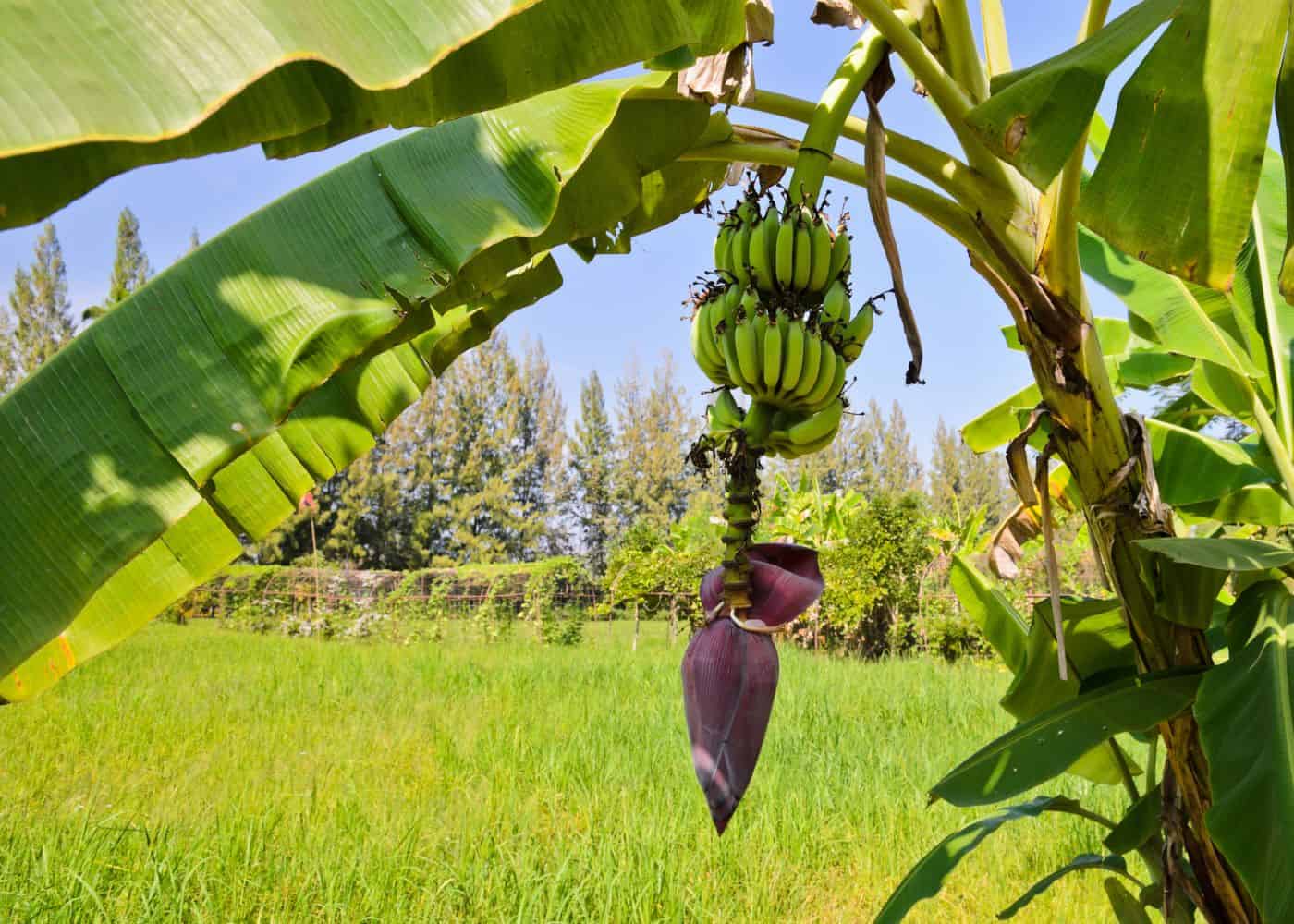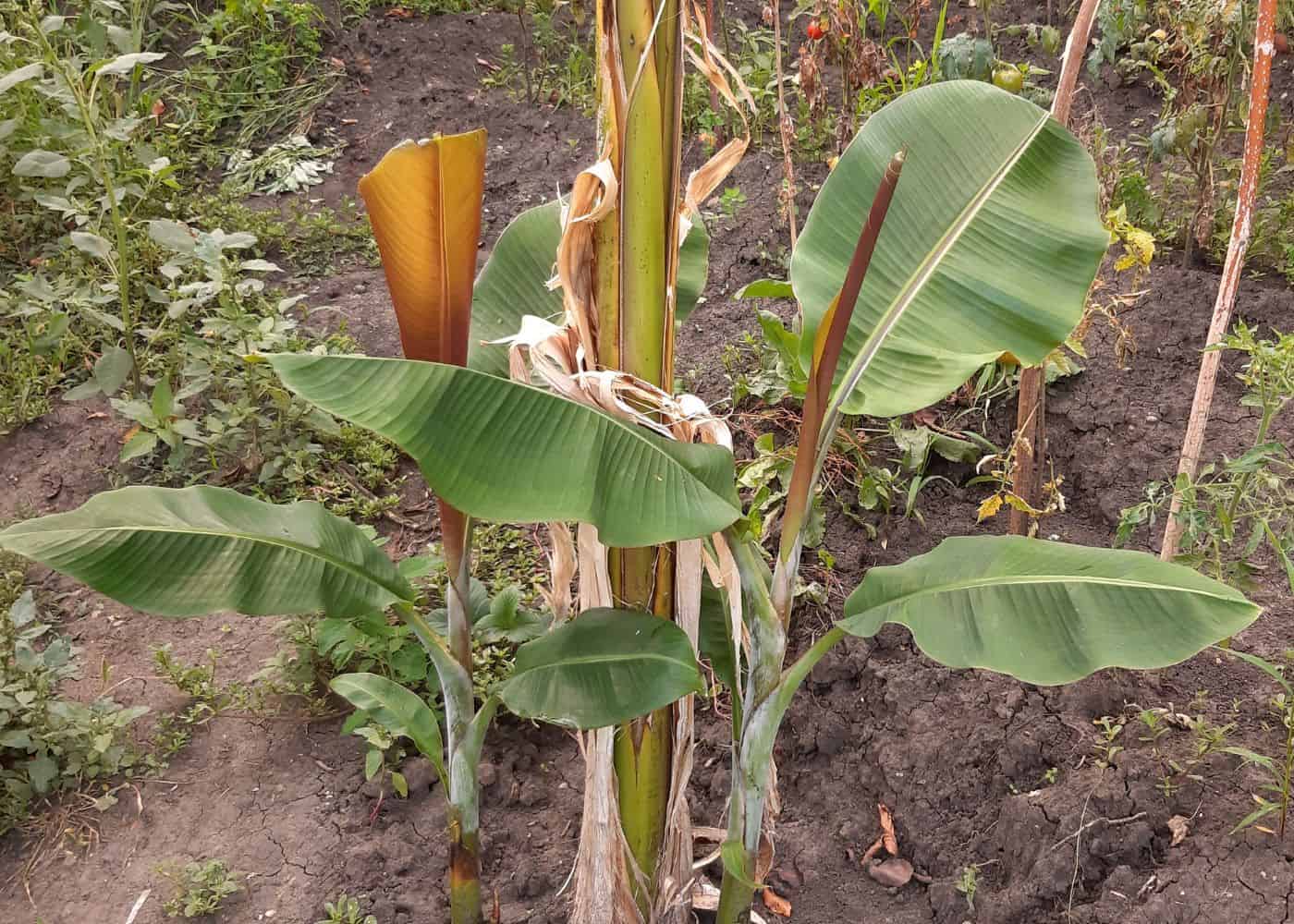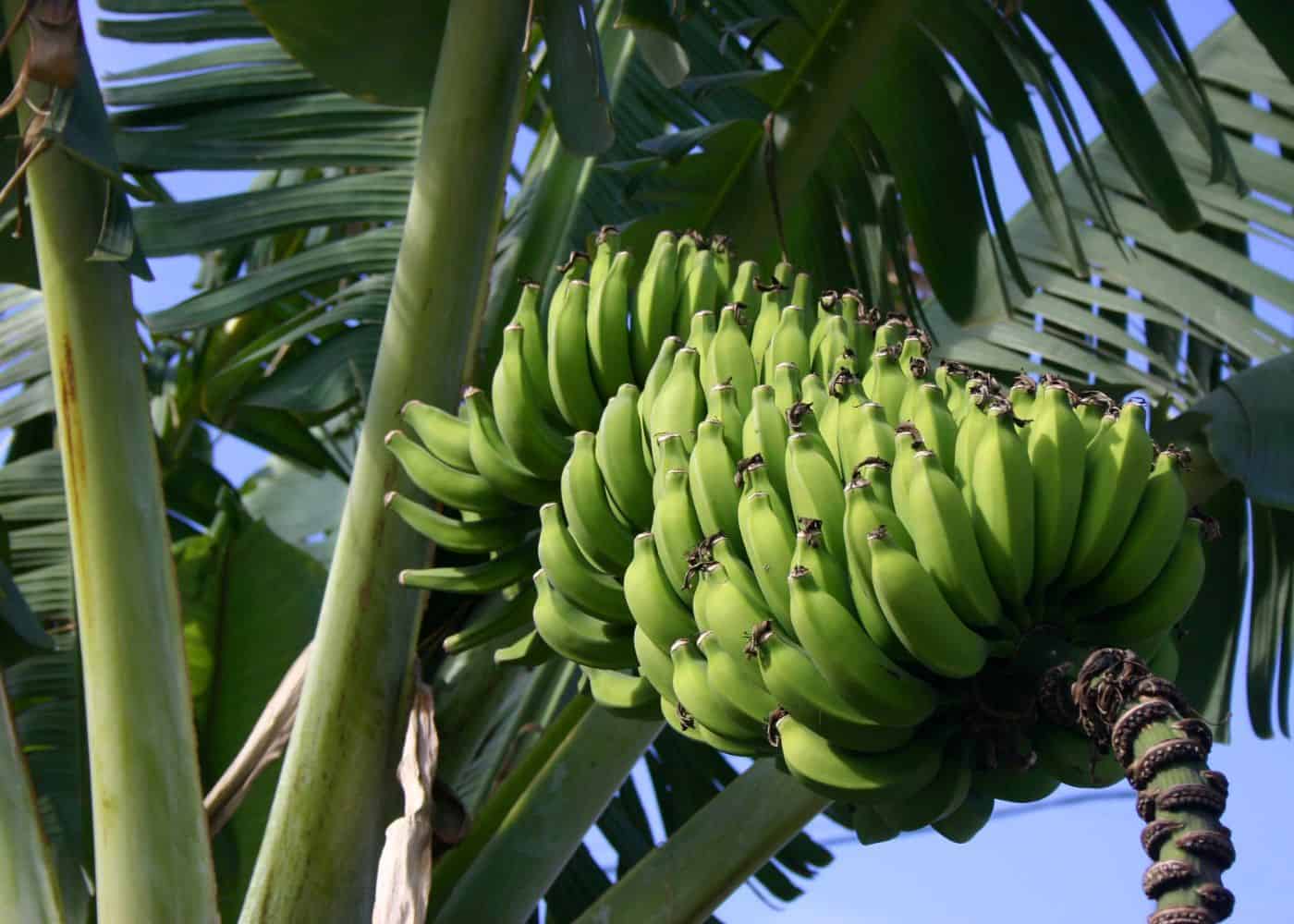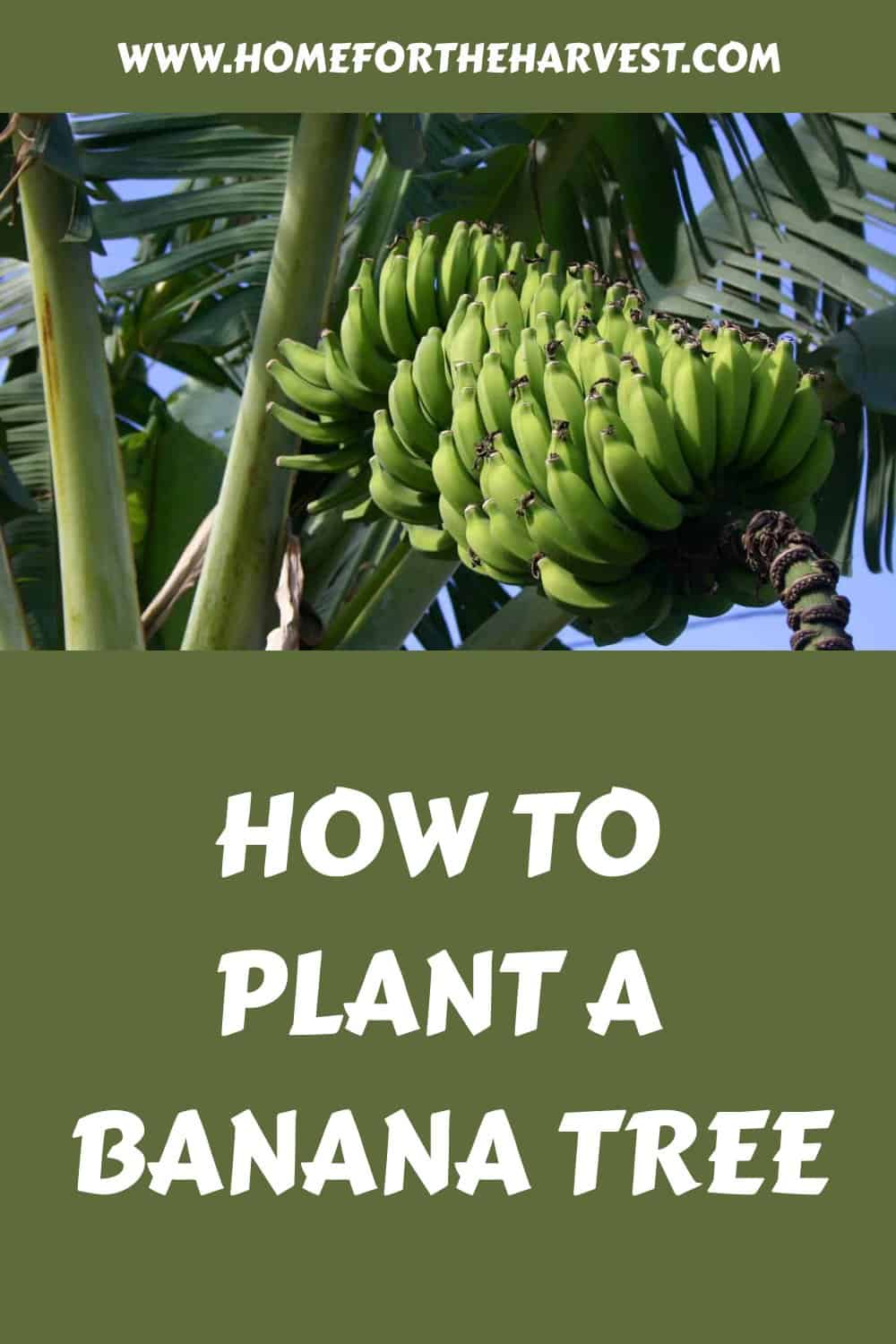As one of the most sought-after commodities around the world, it’s no wonder why gardeners in warmer zones are planting banana trees in their backyards.
Banana trees need plenty of space to grow and expand – especially the larger varieties. Tease the roots and trim older leaves before planting to promote new growth. Dig a large hole and amend the soil with compost and fertilizer, planting the tree at the same soil level it was previously. Water immediately after planting to promote root growth. This is the guide for how to plant a banana tree in 4 easy steps!
The best time to plant banana trees

Like many trees from tropical climates, the best time to plant is in spring or summer when the weather is warm. This is when the roots grow the quickest, ensuring your tree establishes quickly in your backyard.
If you live in a slightly cooler climate where early spring is still chilly, wait until the soil has warmed before planting. This passes any potential cold snaps that may shock the tree soon after planting when it is still vulnerable.
Banana trees are also great for summer planting, but only when the temperatures are moderate. Avoid planting in extremely hot weather, unless you want to spend plenty of extra time watering to keep the roots happy and cool.
How much space do banana trees need?
Even though banana trees are not technically ‘trees’ (they are actually the world’s biggest herb), they still have the towering size of a tree. The exact size differs between cultivars, but all bananas need a good amount of space to accommodate their large leaves and extensive root systems.
Smaller banana tree species can grow to around 10 feet tall or smaller when planted in pots. Others can grow well over 20 feet in height if given the right space. Their roots also travel outwards more than they do downwards, spreading up to 30 feet wide.
In other words, if you’re planting your banana tree outdoors, plan to give them a least a few feet of space on either side between other plants or garden structures. This is also important when planting more than one tree. Aim to give them at least 10 feet of space (slightly less for smaller varieties) to prevent any overcrowding and competition.
Preparing the tree for planting

Before you begin the planting process, start by preparing your banana tree. This involves removing the plant from its container or bag and loosening roots that have likely circled around themselves and become tangled. You can also trim the roots back slightly if they are very long.
Next, take your pruning shears and remove a few of the older leaves lower down on the plant. Any brown growth should be cut off at the base, leaving healthy green leaves behind. This helps direct the energy of the plant toward establishing new roots in the soil and putting out new healthy leaves.
What will you need?
Once your tree is prepared, you’ll need to grab a few more things before you plant. A shovel is the most obvious one, but there are also other elements in the planting process.
When it comes to soil health, compost and fertilizers are essential. Banana trees need rich soil packed with nutrients to grow successfully.
Once you’ve planted, it’s also helpful to add a layer of mulch over the top of the soil. This retains moisture in the soil to keep these thirsty plants happy and keeps the roots cool.
How to plant banana trees?
1. Choose the right spot
Planting your banana tree in the right spot is the first step to success. Choose an area that receives a full day of direct sun for the strongest yields. They can handle some partial shade in the afternoon, but prefer as much light as possible for the best possible growth.
Although they enjoy thorough watering often, the roots shouldn’t be left to sit in soggy soil or stagnant water. Avoid low-lying areas of your garden where water tends to collect. The soil should retain moisture but drain well enough to prevent root rot.
Make sure you clear the area of weeds before planting to make removal easier down the line.
2. Prepare the hole
Grab your shovel and get ready for digging. Due to their large root systems, banana trees need a large planting hole to establish themselves well.
The exact size will depend on the chosen banana type, but it should generally be about double the width and depth of the container the tree came in. If you’re not sure, opt for a hole at least one foot wide and deep, preferably with a bit more space for soil amendments.
Mix some of the soil removed from the hole with equal parts of compost to line the bottom of the hole and provide a healthy soil base for planting. Also, add a handful or two of balanced slow-release fertilizer to the mix where it will reach the roots.
3. Plant
With the roots teased and spread out, hold the tree inside the hole so the base is at the same level as it was in its previous container. Burying more of the stem may lead to rotting. Fill in any gaps with your soil mixture until level with the soil.
Press around the base of the tree gently to anchor it in place. Lay mulch around the base but not touching the stem to prevent rot.
4. Water
Finally, you have the easiest step to complete – watering. This removes any large air pockets and saturates the roots, promoting new and healthy growth.
FAQs about planting banana trees
What plants should not be planted beside a banana tree?
Banana trees should not be planted near plants that are susceptible to the same pests or diseases as bananas, as they can easily spread to the nearby plants. Additionally, banana trees have large leaves and can cast a lot of shade, so it’s best to avoid planting shade-sensitive plants near them. Some examples of plants that should not be planted near banana trees include other fruit trees, vegetables, and herbs.
Can you grow banana trees indoors?
Yes, it is possible to grow banana trees indoors. However, it can be challenging to provide the ideal conditions for a banana tree to thrive indoors. Banana trees require a lot of light and warmth, and they also need to be kept consistently moist. Additionally, indoor banana trees will not produce fruit as they require pollination from another tree.
Before you go…
Want to know more about other vegetables and fruits to grow at home? Click here.







